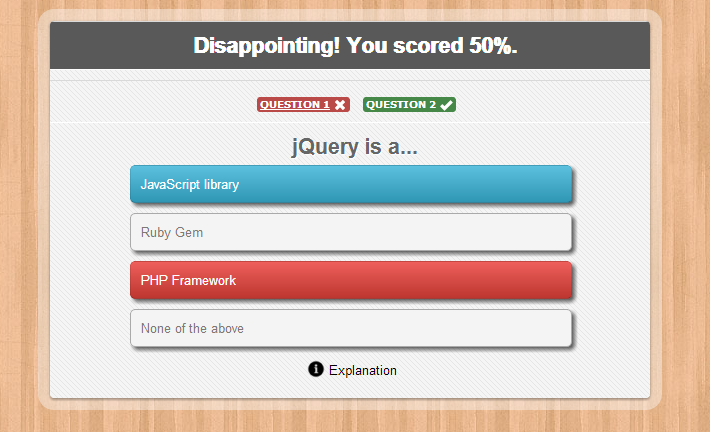
WordPress Glossary Terms–Episode 4
Every beginner blogger knows how tough this whole WordPress thing can be sometimes. Even though WordPress is commonly known as the easiest CMS to use and blogging platform, there are still many things about it that need to be explained. Are you puzzled by strange WordPress terms or abbreviations? Are you looking for a WordPress dictionary that explain these WordPress terms in plain english? Then you are at the right place. Below you can see short descriptions for basic terms related to WordPress.
Database
A database is a structured, organized set of data. In computing terminology a database refers to a software used to store and organize data. Think of it as a file cabinet where you store data in different sections called tables. When you need a particular file you look into that particular section (table) and get the file (data) you need.
WordPress uses MySQL as its database management system. MySQL is a software used to create databases, store and get data when requested. MySQL is also an open source software, just like WordPress and works best with other popular open source software, such as Apache web server, PHP, and Linux operating system.
To install WordPress you need a MySQL database. All WordPress hosting providers offer MySQL included in their hosting packages. During the installation (See:Complete WordPress Installation Tutorial), you provide WordPress your database information, and then WordPress takes care of rest of the things.
What is Database Host
Database host is the computer hosting your database on a MySQL server. Most of the time it is localhost and entering localhost in the host field would connect WordPress to your database. However, some web hosting providers may use different host names to manage MySQL servers. You will find your host name in the MySQL or Database sections of your hosting control panel. Ask your hosting provider if you cannot find the host name.
What is Database Table
Databases have tables which are like sections or cabinets in your database system. Each table has columns and information is stored as rows. Each row has a field for each column in the table.
Example: an office database may have a table called employee_records.
This table may have following columns:
- employee_id
- employee_name
- employee_joining_date
- employee_phone_no
WordPress will automatically create tables inside your database. At the time of writing this, a default installation of WordPress would create the following tables:
- wp_commentmeta
- wp_comments
- wp_links
- wp_options
- wp_postmeta
- wp_posts
- wp_terms
- wp_term_relationships
- wp_term_taxonomy
- wp_usermeta
- wp_users
Each of these tables would have different columns where data is stored.
For example, wp_users table in WordPress has these columns:
- ID
- user_login
- user_pass
- user_nicename
- user_email
- user_url
- user_registered
- user_activation_key
- user_status
- display_name
What is SQL Query
SQL is abbreviation for Structured Query Language, it is a special programming language used to manage databases. An instruction issued by SQL to the database server to retrieve data is called a query. WordPress uses MySQL queries to get data and use it to generate web pages.
SQL is not just limited to retrieve data from the tables. It can also update, insert and delete data from tables and even create new tables. This how WordPress stores and edits all your website data by storing and retrieving it from the database using SQL queries.
Default Theme
WordPress comes with a default theme to display the front-end of the website. This is the first theme that you see when you first install WordPress. The user can then replace it with any other WordPress theme.
The default WordPress theme is used to showcase the features of WordPress, so it is usually feature rich and can be used to create most basic websites. The default theme also serves the purpose of a fallback theme. In case a user’s installed WordPress theme gets deleted or something goes wrong, then WordPress automatically falls back to the default theme.
The first WordPress theme was created by Matt Mullenweg when WordPress was released. At this time users didn’t have the ability to switch themes yet. After the original theme, came the WordPress Classic Theme with WordPress 1.2. It wasn’t until the Kubrick theme was released with WordPress 1.5 that users were given the ability to switch themes. Although many users changed their themes, Kubrick remained the default WordPress theme until it was replaced by TwentyTen in WordPress 3.0.
Every year since the team behind WordPress comes out with a new default theme that is named after the year. TwentyTen is still one of the most popular themes in terms of total downloads.
DNS
DNS or Domain Name System is a system that points a domain name to physical IP address. For example, when a user types in www.example.com in their browser and hits enter, the DNS servers resolve it to the IP address where the website is hosted.
The purpose of DNS is to use easy to remember domain names for websites instead of their numeric IP addresses. It also enables website owners to change their web hosts without changing domain names. Website owners can simply change the DNS entry for their domain name and point to their new web host’s name servers.
What is Name Server
A Name Server (also spelled, nameserver) keeps record of your domain name’s DNS entries. For example, if your website is hosted on HostGator then the name server used to manage your DNS records will be HostGator’s generic name servers, like this:
Each domain name must have at least two name servers. The first name server is the primary server, however if the primary server is not responding then the secondary name server is used to resolve the domain name.
WordPress hosting providers also allow users to get their own private name servers. For example, at WPBeginner we use our own private name server.
What is CNAME Record
CNAME Record is a resource record to define that a domain name is an alias for another domain name.
Example:
- Name ? CNAME
- mail.example.com ? go.domains.live.com
After adding the above CNAME record entry in a domain’s DNS records, visiting mail.example.com will take users to Windows live website.
What is MX Record
MX record is abbreviation for Mail Exchanger record. It is a type of DNS resource record that defines a mail server to handle email for a particular domain name. For example, by adding an MX recorded provided by Outlook.com for your-domain.com, any email received by your-domain.com will be handled through outlook.com’s mail servers.
What is a TXT Record
A TXT record is a DNS resource record type. Most commonly it is used to verify whether an email is actually originating from a domain name, and whether or not to trust that mail. Internet spammers sometimes send email from random domain names without actually owning those domain names, this is called email spoofing. TXT records can have SPF records which is abbreviation for Sender Policy Framework record which is used by email service providers to verify that an email message is actually coming from the same domain as it claims.
TXT records are also used to have a DKIM (Domain Key Identified Mail) record. This record adds an encrypted key in outgoing mail which allows recipient mail servers to see the originating server and whether or not to trust the message.
Dedicated Hosting
Dedicated hosting is a term used to describe web hosting packages that provide a dedicated server with dedicated resources to a single client. Dedicated hosting plans are ideal for WordPress websites with very large number of visitors. Many WordPress hosting service providers offer Dedicated Hosting plans along with shared and VPS hosting plans.
For example, in a shared hosting plan, a client is sharing a computer with many other clients. In the case of a VPS hosting plan the clients are sharing a machine but not the resources with other clients on the same computer. However, on dedicated hosting plans a client leases a whole server with all of its resources. Web hosting companies offer different packages of dedicated hosting plans. Prices of theses plans are based on the clients choice of hardware and resource allocation.
Dedicated hosting plans are ideal for large organizations or websites with much higher traffic. The clients get full control of the server which allows them to configure it to meet their own needs. The dedicated plans also come in managed and unmanaged forms where the hosting center can manage the server for the client in case of any problems. Dedicated Managed servers are generally more expensive. The pricing is also influenced by the amount of resources needed such as bandwidth, storage space, and amount of RAM, amongst other things. Additional expenses for dedicated servers also include the software packages needed to run the server. Such software can include licensing for Windows, if desired, cPanel, if desired, and other paid software. Free alternatives to most of the paid software packages are available but are not generally preferred due to issues with stability of the software. The main exception to the preference for paid vs free software is the widespread use of Linux over Microsoft or other paid OS on servers.
Domain Name
A domain name is a name used to identify a website on the internet. Beneath the surface, websites are associated with IP addresses. These are basically numerical addresses that tell your browser where to find the website on the internet. To make things simpler for humans every website has a corresponding name. You can think of domain name as the human readable version of the IP address.
An example of a domain name would be: wpbeginner.com
They can be purchased through an online registrar such as Godaddy or one of the many domain name resellers. ICANN (the Internet Corporation For Assigned Names And Numbers) authorizes these registrars to sell domain names.
Many WordPress hosting providers such as Bluehost will provide one free domain registration with their packages. You can change the domain name location from one web host to another by changing its DNS settings. DNS settings basically tell the DNS servers which IP address corresponds to that domain name. When you change hosts, your IP address will change because you are changing servers.
There are many different domain name extensions that are available. Some of the most popular domain name extensions are: .com, .net, .org, .info, .edu, .biz. There numerous other country level domains such as .us, .in, .ly, .io, and many more.








